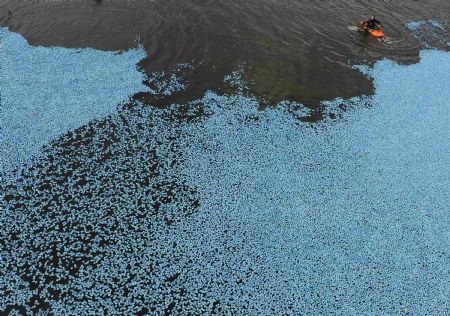|
|
Duck Race, London, United Kingdom
|
Late modern and contemporary
London was the world's largest city from about 1831 to 1925. London's overcrowded conditions led to cholera epidemics, claiming 14,000 lives in 1848, and 6,000 in 1866. Rising traffic congestion led to the creation of the world's first local urban rail network. The Metropolitan Board of Works oversaw infrastructure expansion. It was replaced in 1889 by the London County Council, London's first elected city-wide administration. The Blitz and other bombing by the German Luftwaffe during World War II killed over 30,000 Londoners and destroyed large tracts of housing and other buildings across London. Immediately after the war, the 1948 Summer Olympics were held at the original Wembley Stadium, at a time when the city had barely recovered from the war.
In 1951 the Festival of Britain was held on the South Bank. The Great Smog of 1952 led to the Clean Air Act 1956, which ended the "pea-souper" fogs for which London had been notorious. From the 1950s onwards, London became home to a large number of immigrants, largely from Commonwealth countries such as Jamaica, India, Bangladesh and Pakistan, making London one of the most diverse cities in Europe.
Starting in the mid-1960s, London became a centre for the worldwide youth culture, exemplified by the Swinging London subculture associated with Carnaby Street. The role of trendsetter was revived during the punk era. In 1965 London's political boundaries were expanded to take into account the growth of the urban area and a new Greater London Council was created. During The Troubles in Northern Ireland, London was subjected to bombing attacks by the Provisional IRA. Racial inequality was highlighted by the 1981 Brixton riot. Greater London's population declined steadily in the decades after World War II, from an estimated peak of 8.6 million in 1939 to around 6.8 million in the 1980s. The principal ports for London moved downstream to Felixstowe and Tilbury, with the London Docklands area becoming a focus for regeneration.
|
|









